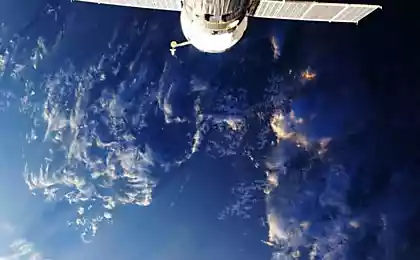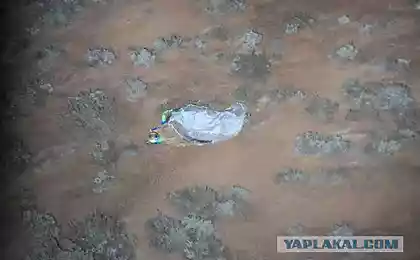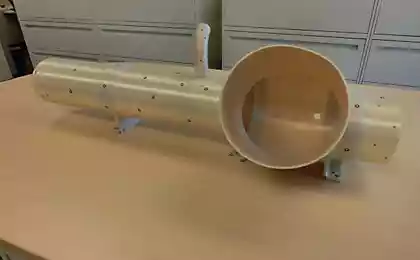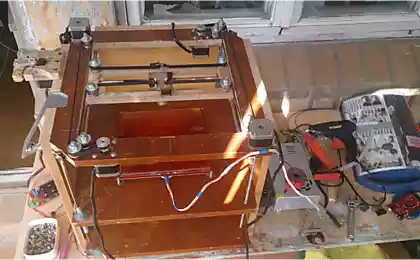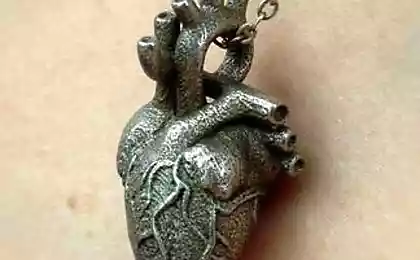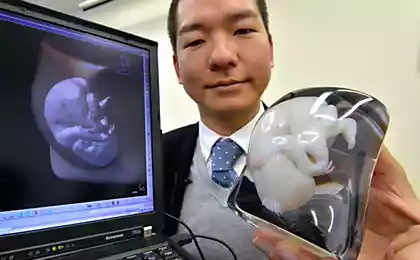1377
The Japanese are very high art
December 3 Japanese space probe Hayabusa-2 and MASCOT , lander, built French German space agencies CNES and DLR, went to the asteroid 1999 JU3. But along with them carrier rocket 3 microsatellite that was not mentioned media.
Shin-en 2, ARTSAT2-DESPATCH, and PROCYON separated after reaching orbit.
Separation (time in UTC):
Hayabusa-2 [6:09:19]
Shin-en 2 [6:15:59]
ARTSAT2-DESPATCH [6:20:09]
PROCYON [6:24:19]
Shin-en 2 - project Kyushu University of Technology.

Designed for testing communication systems for future private missions on lunar orbit and deep space at a distance of about 3 million. Km. As well as testing technology of spacecraft of carbon fiber reinforced thermoplastics (CFRTP). CFRTP been applied in the design of the spacecraft in the first world. Polyetheretherketone resin used. Of scientific equipment - a device for measuring radiation in deep space.
Shin-en 2 transmits CW beacon signal at a frequency of 437, 505 MHz power of 0, 1 Watt and telemetry at a frequency of 437 , 385 MHz (transmitter power 0, 8 W) using a mode close to WSJT, but not the same.
PROCYON (PRoximate Object Close flYby with Optical Navigation) is a microsatellite, will return to Earth to gravity assist at the end of 2015, and then travel to the near-Earth asteroids, near which he must pass at a distance of about 50 km.
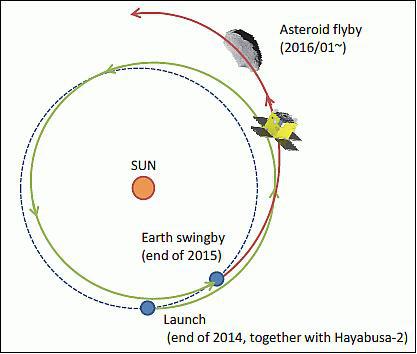
67-kg microsatellite has an ion engine.

DESPATCH (ARTSAT 2)
«DESPATCH» (DEep SPace Amateur Troubadour's CHallenge) - the second space probe ARTSAT series created by a team of more than 70 participants from Tama Art University and The University of Tokyo.
ARTSAT2-DESPATCH is the first sculpture made on a 3D printer and sent into deep space. Rate masterpiece can on 3D models .
DESPATCH CW has a transmitter power of 7 W at a frequency of 437, 325 MHz. With the help of a probe which transmits the & quot; generative poetry & quot; and the temperature inside the probe. The antenna is attached to a bearing rod, which is located at the center of the spiral, made by 3D-printing.

Space probe uses the sun's energy, so the unit will transmit signals within a week, until it reaches a distance of about 3 million. Km from the earth and not use up battery power. The unit does not operate with the Earth.
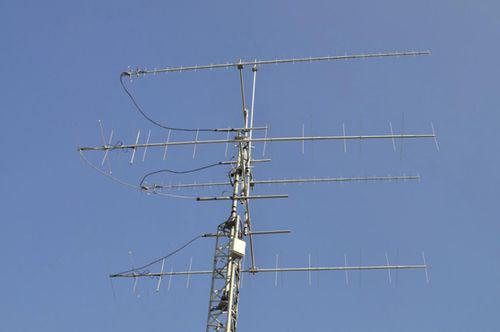
In addition to the artistic part of the mission, carried out technical:
Shin-en 2, ARTSAT2-DESPATCH, and PROCYON separated after reaching orbit.
Separation (time in UTC):
Hayabusa-2 [6:09:19]
Shin-en 2 [6:15:59]
ARTSAT2-DESPATCH [6:20:09]
PROCYON [6:24:19]
Shin-en 2 - project Kyushu University of Technology.

Designed for testing communication systems for future private missions on lunar orbit and deep space at a distance of about 3 million. Km. As well as testing technology of spacecraft of carbon fiber reinforced thermoplastics (CFRTP). CFRTP been applied in the design of the spacecraft in the first world. Polyetheretherketone resin used. Of scientific equipment - a device for measuring radiation in deep space.
Shin-en 2 transmits CW beacon signal at a frequency of 437, 505 MHz power of 0, 1 Watt and telemetry at a frequency of 437 , 385 MHz (transmitter power 0, 8 W) using a mode close to WSJT, but not the same.
PROCYON (PRoximate Object Close flYby with Optical Navigation) is a microsatellite, will return to Earth to gravity assist at the end of 2015, and then travel to the near-Earth asteroids, near which he must pass at a distance of about 50 km.

67-kg microsatellite has an ion engine.

DESPATCH (ARTSAT 2)
«DESPATCH» (DEep SPace Amateur Troubadour's CHallenge) - the second space probe ARTSAT series created by a team of more than 70 participants from Tama Art University and The University of Tokyo.
ARTSAT2-DESPATCH is the first sculpture made on a 3D printer and sent into deep space. Rate masterpiece can on 3D models .
DESPATCH CW has a transmitter power of 7 W at a frequency of 437, 325 MHz. With the help of a probe which transmits the & quot; generative poetry & quot; and the temperature inside the probe. The antenna is attached to a bearing rod, which is located at the center of the spiral, made by 3D-printing.

Space probe uses the sun's energy, so the unit will transmit signals within a week, until it reaches a distance of about 3 million. Km from the earth and not use up battery power. The unit does not operate with the Earth.

In addition to the artistic part of the mission, carried out technical:
- The test pieces space probe made by 3D-printing.
- An experiment on the possibility of receiving the very weak signals from the «cooperative diversity communication» - a method by which the fragmented transmission transmitted spacecraft taken not only its own ground station in Tokyo, but also by many amateur radio stations in different parts of the Earth, collected, and restores the original data transmitted by the spacecraft. conventional equipment is not suitable. Therefore, participants are not so many as we would like the organizers, but still get an international team from Japan, Czech Republic, Russia, Holland, Austria, Argentina and Poland.
The organizers have published this information in the одну Table , which indicates the date of receipt of the data, the distance at which the probe is located, a country where the receiving station and amateur radio callsign. The last row of the table now looks like this:
Callsign, Date, Range [x10, 000km], Country
LU2DDU 12/06/2014 05:11 124 Argentina
UA9UIZ 12/06/2014 20:00 149 Russia (Anatoly G. Alexandrov. Kemerovo region. Probably uses antenna F9FT )
SQ5KTM 12/06/2014 21:00 150 Poland (Michał Zawada. Mesh parabolic antenna diameter of 4 to 5 m)
LU2DDU 12/06/2014 23:17 154 Argentina (Daniel Augusto Esteban. LU2DDU.- UNLP. University of La Plata. Buenos Aires. Argentina.- SDR + converter + 432-440 MHz preamplifier in antenna. Antenna: 4 x 15 elements Yagi linear polarization)
Здесь you can see the antenna used by Polish radio amateur Michał Zawada (callsign SQ5KTM).
Source: geektimes.ru/post/242566/
Music theory and quantum mechanics
Space probe New Horizons has successfully emerged from hibernation



